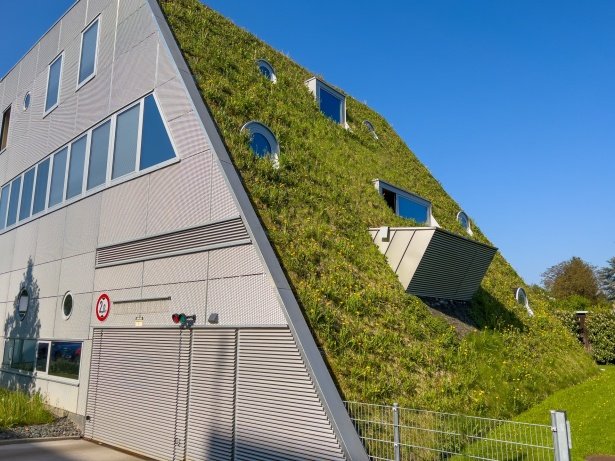What Is Green Living? A Path to Environmental Sustainability
Our planet is at a critical moment, struggling to recover from human-induced emissions that are heating the atmosphere. The situation is becoming alarming, with more wildfires, extreme weather events, and melting glaciers. The time to act is now rather than later. Environmental activists warned us, as did scientists and experts, who predicted the future of climate change situations for decades. Our negligence has caught up with us, and now we face the consequences of our past actions.
The concept of green living is more than a lifestyle; It’s an idea that aims to establish a sustainable environment for present and future generations. Living sustainably involves making responsible choices with sustainability in mind—it’s about doing what is right to protect the environment and reduce our carbon footprint, while we live on this planet.
In this guide, we will define green living, explain why the idea is important, and how we can adopt sustainable habits and practices. By looking at real-world examples, actionable tips, and expert insights, we will highlight why adopting a green lifestyle is crucial for mitigating climate change.

In This Article
- The Urgency of Green Living
- What Is Green Living?
- The Importance of Green Living
- How to Start Living Green
- Case Studies: Global Leaders in Green Living
- Challenges and Solutions in Green Living
- Innovation and Future Outlook
- Call to Action
The Urgency of Green Living
Let’s face it, we live in a world where people are influenced by the lifestyle of others, especially celebrities. Emulating the luxury lifestyle has worsened our throwaway culture, and unsustainable habits are considered normal. According to climate experts, the pressing issue of climate change is a result of human activities and solutions to reduce the impact of unwanted activities that significantly impact climate change.
Recent weather events in the Middle East have shown the destructive level of human-induced climate change. Oman and Dubai were hit by heavy rainfall, which led to the death of 20 people and the disruption of public life and infrastructure. According to Professor Friederike Otto, “It is highly likely that the deadly and destructive rain in Oman and Dubai was made heavier by human-caused climate change”. Extreme weather events like this in a region that hardly gets rainfall are a reminder that we must act now.
Scientists have yet to find another habitable planet for humanity, so we must protect the only one we call home by adopting sustainable practices to mitigate global warming. It’s a responsibility that falls on our shoulders, and our collective effort can make a difference to ensure a greener future.
What Is Green Living?
Green living is an eco-conscious lifestyle that chooses sustainability over unsustainable habits. It involves making choices such as reducing waste, conserving resources, protecting biodiversity, and promoting environmental sustainability. Living green encompasses a variety of practices that go beyond recycling or choosing green transportation; it’s a broader approach to living that considers what benefits the environment with every decision made.
The importance of green living is based on the fact that nature sustains all forms of life on our home planet. However, human activities since the Industrial Revolution have taken a toll on the environment. In the last hundred years, the global population increased, leading to rapid urbanisation and thriving industries that rely on extracting natural resources at an alarming rate.
As the world advances technologically, we must think about how our progress is harming our world. We must ask ourselves if it’s worth being technologically advanced to the detriment of our surroundings and well-being.
The Importance of Green Living
Green living is not just a personal choice because it would be almost impossible to make a significant difference in mitigating climate change without collective efforts. According to environmental sustainability experts, a greener environment benefits everyone. On a greener Earth, everyone gets to breathe cleaner air, drink clean water, and experience a better quality of life and health.
1. Environmental Sustainability
Environmental sustainability is the ideal solution the world needs right now than ever. According to environmental studies, human activities are altering the planet, from mining and exploration to the exploitation of natural forests for resources to build economies. Human activities have negatively impacted the environment and will continue to do so if sustainable measures are not prioritised. Industrialisation and technological advancement have resulted in pollution and massive waste generation.
The core principle of green living is focused on promoting environmental sustainably through the conservation of natural resources and waste reduction. These sustainable measures are the solution to mitigate climate change. Environmental sustainability ensures the conservation of resources for future generations.
The sustainability trend has gained popularity, and the concept is not just focused on minimising our carbon footprint; it also involves making a positive impact. While protecting our environment is essential, restoring and enhancing the natural environment is also important when adopting sustainable practices. Living green comes with a responsibility—it’s a collection of conscious actions by individuals to make significant changes towards a positive direction.
2. Improved Air and Water Quality
Industrialisation improved society and the livelihood of many individuals by creating job opportunities. However, it came at a cost, considering the environmental impact, such as air and water pollution.
At the peak of the COVID-19 pandemic, the world got to experience what a cleaner environment looks like. With factories shut down and fewer vehicles on the road, the air quality in major cities improved. According to studies, Delhi was a notable example after images surfaced online showing the contrast between a busy day and during the pandemic. The lockdown in Delhi led to a decrease in atmospheric pollutants.
The improvements in air quality across cities during lockdown highlight what we could achieve by adopting green practices on a broader scale. According to the Natural Resources Defence Council (NRDC), our reliance on fossil fuels is creating an unhealthy environment. The continuous use of petroleum-based materials will only make things worse until sustainable alternatives become widespread.
Electric vehicles are green innovations to replace gasoline-powered vehicles that contribute to global carbon emissions. According to the International Energy Agency (IEA), in recent years, people’s preference for cars has shifted to electric vehicles and if more people choose EVs over gasoline-powered cars, global carbon emissions will significantly decrease, especially in urban areas with low air quality. Electric vehicles are the future for a healthier environment with less pollution.
3. Energy and Cost Savings
Transitioning to a sustainable lifestyle comes with great benefits. According to NRDC, it’s a life choice that helps you save on utility bills when you choose energy-efficient appliances and technological systems that consume less energy. Going green is an effective way to minimise your carbon footprint on energy consumption. To ensure efficient energy use, always look for ENERGY STAR-certified home appliances. Investing in home appliances and products that meet the Environmental Protection Agency’s (EPA) strict energy-efficient standards benefits the environment in the fight against climate change.
Additionally, being eco-conscious also involves turning off light bulbs when not in use, unplugging home appliances, and insulating your home will further reduce your utility bills. According to the National Park Service, if widely adopted globally, going green on energy consumption can help homes reduce their energy bills, with less greenhouse gas emissions to worry about.
The Three “R’s” of Waste Management
One of the most effective ways to adopt a sustainable lifestyle is to prevent poor waste management by adopting the principles of waste management: Reduce, Reuse, and Recycle. According to waste management experts, the three “R’s” principle is a fundamental aspect of green living as it helps to minimise waste and conserve resources.
Reduce
Let’s start with reducing solid waste, which is the first step in waste management. It’s difficult these days to avoid bringing plastic bags, non-biodegradable packaging material, and single-use plastics home from a grocery store. However, you can make an eco-conscious decision not to generate waste with these materials by prioritising sustainable buying and consumption. According to environmental recommendations, buy what you need when grocery shopping to minimise waste in your home. Conserve water even if it’s abundant in your area, as it is a valuable resource that is scarce in other regions.
Being more efficient in energy consumption is also part of waste reduction. Make sure to turn off lights and home appliances when not in use, and go green with energy-efficient alternatives. By minimising your energy consumption, you will not only be saving on electricity bills but also reduce the demand to generate more power with fossil fuel, which is a major contributor to greenhouse gas emissions.
Reuse
Reusing items instead of discarding them is another important aspect of waste management. Adopting a habit of reusing can effectively extend the life of a product. It’s better to reuse an item than to discard it after only a few months of use. For example, clothing can be repurposed as cleaning rags, while old glass jars can serve as food storage containers.
Reusing items also provides an opportunity to support community initiatives that support and promote the reuse of goods. You can organise swap meets or set up online stores where people from your community can sell or barter secondhand items.
Recycle
Recycling has significantly reduced waste in different industries. It is a process of converting waste into new products. Commonly recycled materials include paper, plastics, glass, and metal. Recycling waste materials helps reduce the rate at which natural resources are extracted.
Recycling programs have evolved to address electronic waste and hazardous household waste like batteries and paint thinner. Taking these items to recycling facilities has prevented the disposal of harmful chemicals from polluting the environment.
For sustainability’s sake, it’s important to know items that are accepted for recycling in your area. We recommend contacting your local recycling centre before taking your recyclables to the facility.
How to Start Living Green
1. Plant Trees
Planting trees is one of the best ways to combat climate change. According to an article published on OneTreePlanted, trees are natural air filters that absorb carbon dioxide and provide oxygen for better living. Unfortunately, rapid urbanisation and deforestation due to commercial logging and agriculture have led to the massive destruction of trees in natural forests.
Trees provide shade for us, a home to wildlife and their food sources. Planting trees is a sustainable method and a simple act that promotes environmental sustainability. When you plant trees around your home, it creates a suitable environment with improved air quality that naturally cools your home. Tree-planting initiatives are also something you can participate in to build a healthier community.
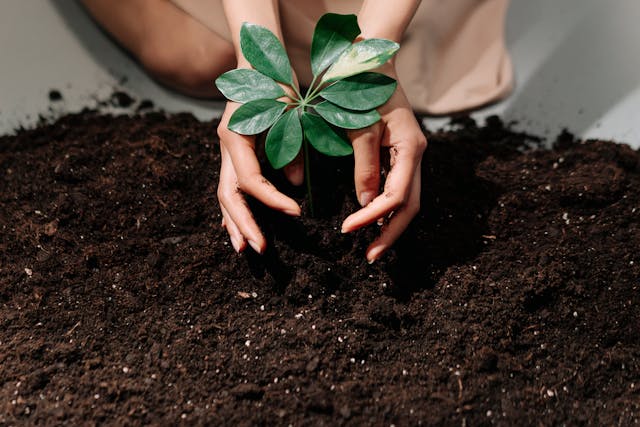
2. Substitute Plastic Water Bottles with Reusable Ones
Avoid using single-use plastic bottles that would end up in landfills or the ocean. A sustainable option to stay hydrated is to choose reusable stainless steel or glass water bottles. These choices eliminate the need for plastic water bottles, which in turn helps reduce plastic waste.
Unlike plastic bottles, reusable ones are more durable and can be used for a longer period. Some reusable bottles are designed with insulation, which keeps your water cold or hot.

3. Compost Organic Waste
Composting is an idea and the most effective way to make good use of food scraps and yard trimmings. Converting these organic wastes into nutrient-rich soil is an effective method to reduce waste sent to landfills. Composting creates organic fertiliser for gardens and farms.
It’s easy to start with a compost bin or pile. Gather the organic waste and place it inside the bin, where microorganisms will help speed up the decomposition process. Once the waste is fully decomposed, you have a rich compost that can be used to improve soil health.
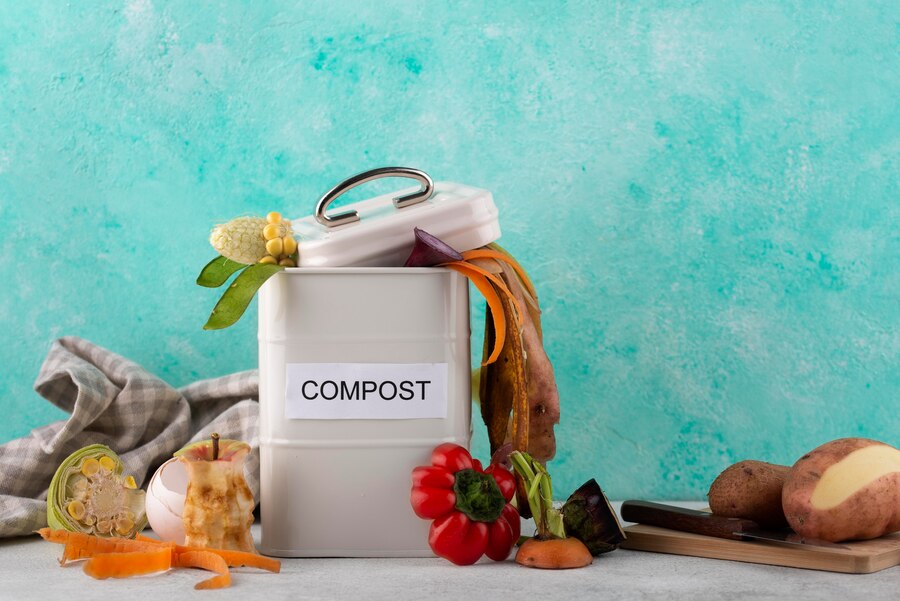
4. Reduce, Reuse and Recycle
As mentioned earlier, adopting the three “R” principles is essential for waste reduction and resource conservation. You can significantly reduce your impact on the environment if you start being mindful of your consumption habits and make efforts to recycle instead of discarding.
Opt for reusable alternatives like cloth bags, metal straws, and glass containers, instead of single-use plastics, such as plastic bags, straws, and packaging. Make recycling a regular routine and reuse items whenever you can.
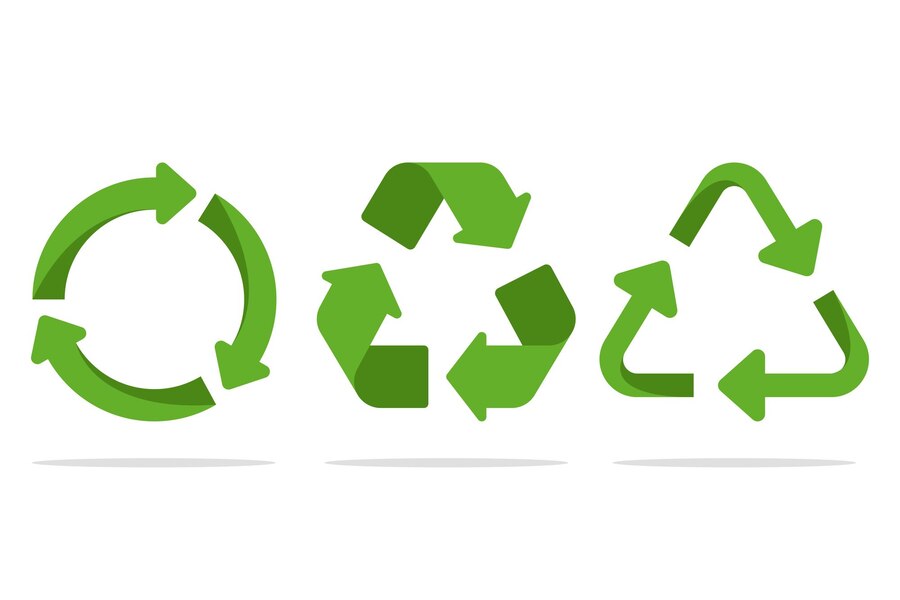
Case Studies: Global Leaders in Green Living
Some countries around the world have shown their commitment to achieving sustainability by adopting eco-friendly practices that set the standard for the rest of the world. Here, we have listed the greenest countries in the world, according to the Environmental Performance Index (EPI).
Denmark
Denmark relies on renewable energy to power its economy -it plans to be carbon neutral by 2050. The Scandinavian country has invested significantly in wind energy, which now accounts for almost 50% of its electricity generation. Additionally, the country’s commitment to a greener future is highlighted in its green transportation systems and sustainable urban planning.
Switzerland
Another European nation with genuine intent for a sustainable planet is Switzerland. Committed to a greener future, Switzerland’s green policies focus on conserving the country’s natural resources and significantly reducing waste. The country’s zero-waste initiative, along with its waste management system, takes recycling very seriously, reducing waste sent to landfills. The Swiss economy also relies on renewable energy sources to generate its electricity.
Sweden
Sweden is setting an example for other countries to follow. The country has done exceptionally well in its commitment to reducing greenhouse gas emissions and achieving carbon neutrality. Sweden is solving its waste problem by converting solid waste into energy for electricity and heating. The country’s true commitment to sustainability is also evident in its transportation system.
Finland
Finland is known for its rich forest cover, with over 70% of its territory covered by nature. The country’s commitment to environmental sustainability incorporates effective measures to conserve its natural forest. Finland’s policies also prioritise the efficient use of its resources, promoting the use of renewable energy and the protection of biodiversity. The country also takes pride in promoting eco-tourism and encouraging the adoption of sustainable practices among visitors.
Norway
About a decade ago, I read an article on Norway’s sustainability plan with electric vehicles. It’s no surprise that electric vehicles account for more than half of new car sales in the country. Like its Scandinavian neighbour, Norway’s policies also prioritise conserving natural resources and protecting biodiversity. Norway generates most of its electricity from renewable energy sources, specifically hydropower.
These countries are at the forefront of achieving carbon neutrality, and the rest of the world can follow in their footsteps. They have proven that it’s possible to achieve economic growth sustainably without impacting the environment.
Challenges and Solutions in Green Living
While green living is generally seen as a solution to mitigate climate change, it is not without challenges. Switching to an eco-friendly lifestyle is not a walk in the park—people may struggle to fully adapt to a new lifestyle. However, these challenges can be overcome with the right mindset and strategies.
1. Cost of Green Products
Surveys have shown that one of the challenges people are concerned about in adopting a sustainable lifestyle is the cost of eco-friendly products. Sustainable alternatives, whether they are energy-efficient appliances, organic food, or green cleaning products, are often more expensive than conventional products. However, green products can compensate for their high price tags by reducing energy and resource consumption, which lowers utility bills over time.
To address this challenge, it’s a good idea to start small with affordable, eco-friendly products like energy-efficient light bulbs or locally sourced food from farmers.
2. Access to Resources
Limited access to sustainable products is also another challenge for many people trying to switch to a greener lifestyle. This is especially true for rural communities where green products may not readily be available. However, with the help of the internet and the emergence of online stores, people can easily find products that will be delivered to them, even in remote areas.
Community initiatives such as farmers’ markets, co-ops, and community gardens can also help provide access to sustainable products. Supporting these initiatives can positively impact the local economy and promote sustainability in the community.
3. Lack of Awareness
Lack of awareness can be a huge barrier towards the sustainability movement. Many people do not understand what it means to adopt a green lifestyle; they are unaware of the benefits of being eco-conscious, or simply don’t know how to start. This is where education and awareness campaigns play a crucial role in providing valuable information to influence life choices toward sustainability.
Eco-conscious individuals can also educate themselves by seeking more information online and participating in community groups and events. People are more likely to embrace sustainability when they are educated and have a better understanding of its importance.
4. Resistance to Change
Letting go of old habits can be difficult for most people. It’s never easy, but one small attempt at a time can make a difference and encourage the adoption of green practices. Start at the beginner level by doing simple things like reducing waste and conserving energy, then gradually work your way up to supporting renewable energy.
Green living is more of a journey, one that allows for mistakes along the way. Making mistakes doesn’t mean you’re failing—green living is a long-term commitment to making positive changes, and setbacks are simply part of the process.
Innovation and Future Outlook
Renewable Energy
Renewable energy has gained traction and has become more efficient in recent years. It will continue to improve with innovative technologies to mitigate climate change. It’s not just countries harnessing renewable energy sources like solar, wind, and hydropower—homeowners and businesses are also relying on solar power to reduce their carbon footprint.
Advanced batteries and smart grids have made renewable energy more efficient. These technologies enhance the integration of renewable energy into the grid, improving power supply performance.

Sustainability Agriculture
Sustainable agricultural practices have become widespread, implementing effective farming techniques such as regenerative agriculture, permaculture, and organic farming. Eco-friendly agriculture practices improve soil health and prioritise responsible resource use, which in turn yields healthier food.
Vertical farming and community-supported agriculture (CSA) programs are making a difference in urban environments. These initiatives have made an impact on growing sustainable food systems within urban agriculture.
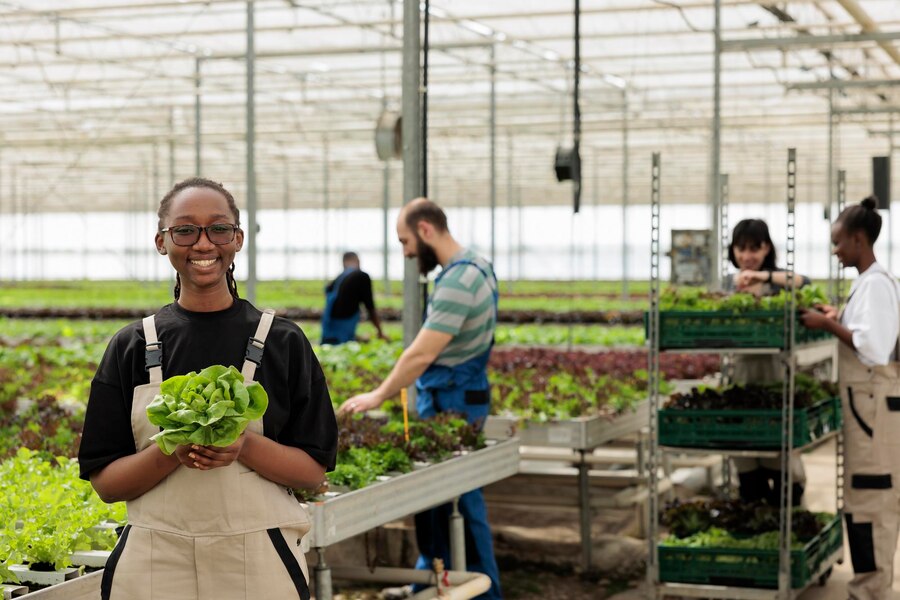
Green Building Practices
The construction industry plays a significant role in global warming, and green building practices have emerged as a sustainable alternative. Energy-efficient design, eco-friendly building materials, and green infrastructure are becoming the standard in new projects.
Green building practices are reducing the construction industry’s carbon footprint through innovations such as green roofs and passive solar design. These installations are beneficial for human health and the environment.

Call to Action
Protecting our environmental sustainability should be a collective effort—a responsibility for everyone. When we collectively accept the responsibility to adopt a sustainable lifestyle, we can accomplish significant results in a short time. You can start small by reducing waste and conserving energy, then gradually progress by supporting renewable energy.
Our actions can make a huge difference in mitigating climate change.

